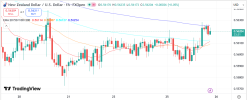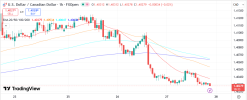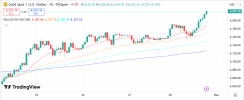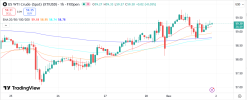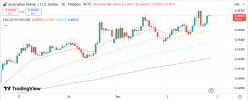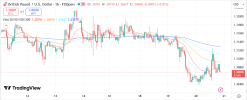
GBP pares losses ahead of UK retail sales data
The GBPUSD currency pair drew a bullish candlestick yesterday, Thursday, November 20th, with a small body and relatively long shadows at the top and bottom. The price formed a high of 1.13124, a low of 1.30376, and a close of 1.30758 from an open of 1.30564.
In the American trading session, GBP strengthened following the release of the US Nonfarm Payrolls (NFP) report, which far exceeded expectations, revealing that the economy added more people to the labor force than expected. The US economy added 119,000 jobs in September, boosting the chances of a Fed rate cut to 43%, despite the unemployment rate dropping to 4.4%. Hawkish Fed officials warned against easing policy too quickly, as it could push inflation higher and undermine its 2% inflation target commitment. Meanwhile, in the UK, declining inflation and confidence reinforced bets on a Bank of England (BoE) rate cut.
Today is a busy day of economic data releases that have the potential to trigger market volatility. The pound sterling will be the main focus in the European session with the release of important UK retail sales data. According to Forexfactory, UK retail sales rose 0.5% in the previous release, and today's data is expected to contract by -0.1%. The implications of a strong data release could increase optimism about consumer spending and economic growth, providing a positive boost to the GBP. A weak figure could raise fears of a recession or slowdown, which could weigh on the GBP.
Other data releases of interest include the UK flash manufacturing PMI and the UK services PMI. The PMI is an indicator of healthy business activity; a reading above 50 indicates expansion. A stronger-than-expected UK PMI could support the GBP. The flash manufacturing PMI is expected to come in at 49.3, a slight contraction from the previous release of 49.7. The flash services PMI is expected to come in at 51.9, a slight decrease from the previous release of 52.3.
In recent days, there have been reports of a decline in UK inflation (CPI) to 3.6% in October. This has the potential to increase speculation that the BoE will hold or even cut interest rates sooner, which tends to be negative for GBP. The market will be watching today's data for further clues regarding the BoE's policy direction.
Today, the US will also release economic data, including the Flash Manufacturing PMI and Services PMI. The US Flash Manufacturing PMI is estimated at 52.0, slightly down from the previous release of 52.5. The Flash Services PMI is estimated at 54.6, down from the previous release of 54.8. Looking at the UK and US PMI figures, business activity in the US is stronger than in the UK.
General sentiment towards the US dollar is currently influenced by the Fed's comments and US bond yields. The dollar tends to strengthen if US data shows a resilient economy, which could increase speculation that the Fed will hold interest rates for longer.
The US Dollar Index (DXY) is currently up around 0.14% and is above the 100 level, indicating the US dollar's strong performance against six other major currencies. The DXY reached a high of 100.360 before finally falling to 100.257.
Today's forecast shows key resistance in the 1.3150-1.3180 range, and key support in the 1.2950-1.2920 range. A breakout of these levels could lead to further price increases.




